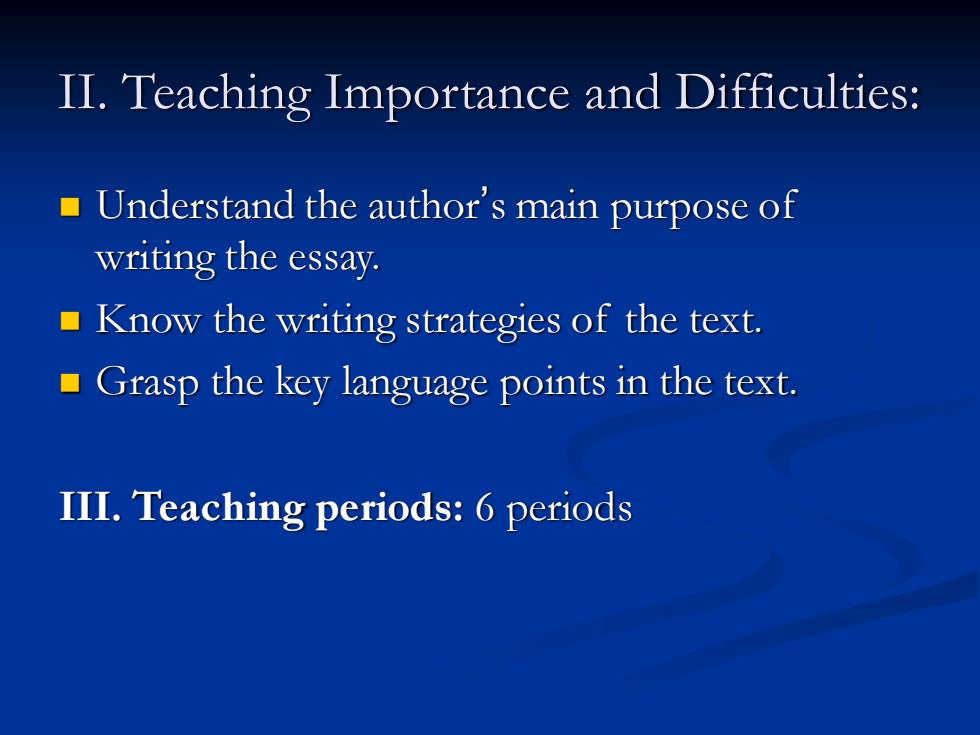
Unit 3 Bards of the Internet
Unit 3 Bards of the Internet

I.Teaching Aims: To get the students know the style of an exposition. To have the students understand the satirical words and sentences used in the essay. To get students grasp the key words and sentences structures
I. Teaching Aims: ◼ To get the students know the style of an exposition. ◼ To have the students understand the satirical words and sentences used in the essay. ◼ To get students grasp the key words and sentences structures

II.Teaching Importance and Difficulties: Understand the author's main purpose of writing the essay. Know the writing strategies of the text. Grasp the key language points in the text. III.Teaching periods:6 periods
◼ Understand the author’s main purpose of writing the essay. ◼ Know the writing strategies of the text. ◼ Grasp the key language points in the text. III. Teaching periods: 6 periods II. Teaching Importance and Difficulties:

IV.Teaching steps: 1.Warm-up Questions: 1)Do you frequently surf the Internet?For what purpose do you do it most of time? 2)How has the Internet changed our lives?
1. Warm-up Questions: 1) Do you frequently surf the Internet? For what purpose do you do it most of time? 2) How has the Internet changed our lives? IV. Teaching steps:

2.Information related to the text: )About the author:Robert J.Samuelson (1945-) Philip Elmer-DeWitt has been covering science and technology for Time Magazine since he reported a cover story on computer "Whiz Kids"in 1982.He became a staff writer in 1983,a senior writer in 1993,a senior editor in 1994 and an assistant managing editor in 1997.He started two new sections in the magazine-Computers (1982 and Technology (1987)-and in 1994 helped launch Time Online (now Time.com),America's first interactive weekly newsmagazine.In January 2002 he was promoted to sciences editor, directing Time's coverage of science,medicine,space a and the environment
2. Information related to the text: 1)About the author: Robert J. Samuelson (1945-) Philip Elmer-DeWitt has been covering science and technology for Time Magazine since he reported a cover story on computer "Whiz Kids" in 1982. He became a staff writer in 1983, a senior writer in 1993, a senior editor in 1994 and an assistant managing editor in 1997. He started two new sections in the magazine-Computers (1982) and Technology (1987)-and in 1994 helped launch Time Online (now Time.com), America's first interactive weekly newsmagazine. In January 2002 he was promoted to sciences editor, directing Time's coverage of science, medicine, space and the environment